
Twitch influencer Kai Cenat charged with inciting riot after NYC ‘giveaway’ descends into violence
Social media influencer Kai Cenat has been charged with inciting a riot and unlawful assembly after his promised giveaway event in Manhattan’s Union Square descended into violence. Thousands of Mr Cenat’s fans gathered in the park on Friday afternoon after he announced a “huge giveaway” in a Twitch livestream. The scene quickly turned violent as aerial footage showed fights breaking out, people hurling stones and chairs at police officers, climbing onto a subway station entrance and tearing down metal barriers. An unknown number of people were hurt, including several officers, and dozens were arrested. Mr Cenat, 21, who has 6.5 million followers on Twitch and more than four million on YouTube, was surrounded by hundreds of fans as the chaos unfolded before he left with a police escort and was later taken in for questioning. On Friday night, NYPD chief of department Jeffrey Maddrey announced Mr Cenat was facing two counts of inciting a riot and unlawful assembly, among other charges that were not disclosed. Mr Maddrey confirmed that there had been no coordination with police ahead of the event. Mr Cenat has not spoken publicly about the incident. In total, police arrested 65 people, including 30 juveniles. Mr Cenat announced his giveaway in a Twitch stream on Wednesday, promising to hand out computers, Play Station 5s, microphones, keyboards, webcams, gaming chairs, headphones and giftcards. “I feel like New York really deserves it,” he said. Fans began gathering in Union Square at around 3pm Friday, an hour before Mr Cenat’s anticipated arrival. The park was quickly overwhelmed as the crowds spilled into the streets, with Mr Maddrey saying: “We went from 300 kids to a couple of thousands of kids in minutes.” The NYPD activated its highest level of disaster response, Level 4, after initial attempts to clear the crowds faltered and violence exploded. A citywide alert went out for every available officer across the five boroughs — up to 1,000 officers — to go straight to Union Square to deal with the rioting. Mr Maddrey said that the teenagers broke into a construction site in the square and threw rocks, bottles, paint cans and lit fireworks at officers. “Our officers were attacked, we were crushed, we were pushed, I had officers on the floor,” Mr Maddrey said. “You had people were walking around with shovels, axes... a lot of young people got hurt.” A line of police with clubs and shields smashed through the crowd at around 4.30pm, and began to regain control of the situation, according to reporters on the ground. One police officer was reportedly jumped by rioters and severely beaten. Mr Maddrey said he had been in the thick of the riot, and suffered injuries after being hit with flying objects. “As you see I’m a little embarrassed, I’m very dirty right here. “I was in the middle of the crowd, I was hit with a couple of objects as well. I think I have a couple of injuries but I’ll figure that out when I have time to think about it. “I had officers who were hit and were hurt, but they stayed to help us resolve this.” Mr Maddrey saw young people in the crowd with severe injuries, and suffering panic attacks and anxiety attacks. “People were suffering out here. It was a lot of people, it was uncontrolled, it took us a while to get it under control, and a lot of young people got hurt.” Many of the injuries were sustained by teenagers throwing objects at one another, he added. He said police were still gauging the exact number of injuries. Earlier, CBS News New York showed live video footage showing several people had climbed onto a roof at the entrance to Union Square. “Our officers used great restraint despite the aggression they were met with,” Mr Maddrey said. The gathering was declared an unlawful assembly, and officers tried to encourage them to leave the area. “After numerous warnings and assailed, we started to make arrests and clear out the park.” Traffic was snarled in streets surrounding the square, with groups of youths climbing on top of vehicles. People could be seen pounding on the side of a bus, and climbing on top of another bus and jumping up and down. The MTA prevented subway trains from stopping at Union Square for about an hour, before resuming regular services just before 5pm. A large amount of paint was splattered across the south side of Union Square Park. Police erected metal barricades to try to push the crowd back. They issued a warning over loudspeakers: “This gathering is unlawful. You are ordered to disperse. “If you leave voluntarily, no charges will be placed against you. If you refuse to leave you will be arrested for unlawful assembly.” After Union Square quieted down, Mr Maddrey said police were continuing to monitor groups of rioters who had spread out around Manhattan. “We have encountered things like this before, but never to this level of dangerousness where young people would not listen to our commands, they were fighting each other and they were hurting each other.” “This is the power of social media, the danger of social media,” Mr Maddrey said. “We can’t allow this to happen again.” Read More Who is Kai Cenat? YouTuber arrested after PS5 giveaway in New York descends into chaos Chaos unfolds among crowd gathered in NYC park for influencer’s event
1970-01-01 08:00

Russian tanker hit by sea drone near Crimea Bridge
(Reuters) -A sea drone attack damaged a Russian tanker near the strategic bridge linking Russia to the annexed peninsula of
1970-01-01 08:00

Russia says tanker hit in Ukrainian attack near Crimea
The ship's engine room is damaged after the strike, Russian maritime officials are quoted as saying.
1970-01-01 08:00

Gilgo Beach murders - live: Long Island police identify Jane Doe 7 but won’t comment on link to Rex Heuermann
The Gilgo Beach murders victim previously known only as Jane Doe 7 has finally been identified more than 26 years after her partial remains were first discovered along the Long Island shores. In a press conference on Friday, Long Island officials announced that they had identified the victim as Karen Vergata. Vergata, a 34-year-old woman, was last seen alive in Manhattan in 1996 while working as an escort. Police refused to take any questions and would not comment on whether or not she is linked to serial killer suspect Rex Heuermann. This comes as prosecutors have asked the court to obtain a swab of DNA from Mr Heuermanna and as his wife broke her silence in her first interview since his shock arrest to reveal she is filled with “anxiety” and their two children “cry themselves to sleep” every night over the horror case. Mr Heuermann, 59, was arrested on 13 July and charged with the murders of Amber Castello, Megan Waterman and Melissa Barthelemy. He is also the main suspect in Maureen Brainard-Barnes’ killing. The women all went missing in 2009 and 2010 before their remains were found along Gilgo Beach. Read More Gilgo Beach serial killer suspect’s contact with wife revealed Daughter of Happy Face Killer launches GoFundMe for Gilgo Beach murders suspect’s wife Rex Heuermann’s defence buried in mountain of evidence as he faces court in Gilgo Beach murders case
1970-01-01 08:00

Gilgo Beach murders victim Jane Doe 7 identified as Karen Vergata 26 years after remains discovered
The Gilgo Beach murders victim previously known only as Jane Doe 7 has finally been identified more than 26 years after her partial remains were first discovered along the Long Island shores. Karen Vergata, a 34-year-old woman who was last seen alive in Manhattan in 1996 while working as an escort, was named on Friday by Long Island officials. The huge breakthrough in the case comes almost three decades after some of her remains were first discovered – and weeks after 59-year-old father-of-two architect was arrested and charged with the murders of three other victims. It was 20 April 1996 when the woman’s legs were found wrapped in plastic at Davis Park on Fire Island’s Blue Point Beach. Almost exactly 15 years later on 11 April 2011, the woman’s skull was then found off Ocean Parkway during the search for Gilgo Beach victims. The skull was located close to the remains of another also unidentified victim – Jane Doe 3, also known as Peaches. The two sets of remains were found to belong to the same person. Before now, investigators had been unable to identify Jane Doe 7 – also dubbed Fire Island Jane Doe. She was described only as a white woman aged 18 to 50 years old who had several notable scars including evidence of surgery on her left ankle. In total, the remains of 11 victims were found dumped along the shores of Gilgo Beach back in 2010 and 2011 but, more than a decade later, several are yet to be identified. This major development comes as prosecutors are seeking to obtain a swab of DNA from Rex Heuermann, the man arrested and charged with the murders of three of the victims and suspected of a fourth killing. In a court filing this week, prosecutors said that the DNA sample would “provide further relevant evidence of the defendant’s identity as the perpetrator of the crime”. Prosecutors have so far obtained hundreds of hours of footage from the suspect’s home in Massapequa Park and his office in Midtown Manhattan, 2,500 pages of documents, crime scene photographs and autopsy reports in the high-profile case. The trove of evidence was turned over to Suffolk County Supreme Court Justice Timothy Mazzei and Mr Heuermann’s attorney Michael Brown on Tuesday as the accused killer appeared in court for a brief preliminary hearing. Suffolk County DA Tierney said last week that a “massive amount of evidence” had been recovered from the home which Mr Heuermann grew up in as a child – and which he went on to share with his family up until his sudden arrest. No human remains were discovered, but a trove of around 270 guns were seized from the home. The DA previously revealed that they believe at least some of the murders may have taken place inside the home. Mr Heuermann’s wife and two adult children were out of town at the time of each of the three murders he is charged with, according to court records. The 59-year-old architect was taken into custody on 13 July, almost 13 years after the bodies of at least 11 victims were discovered along the shores of Gilgo Beach on Long Island. He was charged with the murders of Megan Waterman, Melissa Barthelemy and Amber Costello. He is also the prime suspect in the murder of Maureen Brainard-Barnes – who was last seen alive in early June 2007 in New York City and who, with the three other women, is known as the “Gilgo Four”. All four women worked as sex workers and disappeared after going to meet a client. They were all found in December 2010 within one-quarter mile of each other, bound by belts or tape and some wrapped in burlap – their bodies dumped along Gilgo Beach. They are among 11 victims whose remains were found along the shores of Long Island in 2010 and 2011, sparking fears of one or more serial killers. As well as looking into his connection to the murder of Brainard-Barnes and the other Gilgo Beach victims, law enforcement agencies are now also looking into unsolved murders and missing persons cases all across the country. Police in Las Vegas and South Carolina – where Mr Heuermann owns properties – and Atlantic City – where several sex workers have been found murdered – have confirmed they are eyeing the suspect in cold cases. Court records show that Mr Heuermann was linked to the “Gilgo Four” murders through a tip about his pickup truck, a stash of burner phones, “sadistic” online searches, phone calls taunting victims’ families, his wife’s hair found on the victims’ bodies – and a pizza crust. The first piece of the puzzle came when a witness in the Amber Costello case revealed details about a vehicle that a client was driving when she was last seen alive. Costello, who worked as a sex worker, was seen alive on the evening of 2 September 2010 when she left her home in West Babylon. A witness said she had gone to meet a client who was driving a first-generation Chevrolet Avalanche. Last year, a registration search showed that local man Mr Heuermann owned a first-generation model of the truck at the time of Costello’s disappearance. He also matched the witness’ description of the man believed to be the killer: a large, white “ogre”-like male in his mid-40s, around 6’4’ to 6’6” tall, with “dark bushy hair,” and “big oval style 1970’s type eyeglasses”. The discovery of the car led investigators to hone in on Mr Heuermann including executing 300 subpoenas, search warrants and other legal processes to obtain evidence to determine his potential involvement in the killings. Among this was Mr Heuermann’s alleged use of burner phones, with prosecutors saying that he used burner phones to contact the three women and arrange to meet them at the time when they went missing. He also allegedly took two of the victims’ cellphones – and used one to make taunting phone calls to one of their families where he boasted about her murder, court documents state. Mr Heuermann’s DNA was found on one of the victims, while his wife’s hair was found on three of the four women he is connected to. Following his arrest, his wife Asa Ellerup filed for divorce. She has since told The New York Post that she has been left filled with “anxiety” and their two children “cry themselves to sleep” over the horror. “I woke up in the middle of the night, shivering... anxiety,” she said. “My children cry themselves to sleep. I mean, they’re not children. They’re grown adults but they’re my children, and my son has developmental disabilities and he cried himself to sleep.” Mr Heuermann’s sudden arrest comes after the horrific serial killer case has captured the nation’s attention for more than a decade. The Gilgo Beach murders had long stumped law enforcement officials in Suffolk County who believed it could be the work of one or more serial killers who targeted sex workers and dumped their bodies along the remote beaches on Ocean Parkway. The case began in May 2010 when Shannan Gilbert vanished after leaving a client’s house on foot near Gilgo Beach. She called 911 for help saying she feared for her life and was never seen alive again. During a search for Gilbert in dense thicket close to the beach, police discovered the remains of another woman. Within a matter of days, the remains of three more victims were found close by. By spring 2011, the remains of a total of 10 victims had been found including eight women, a man, and a toddler. Police have long thought that it could be the work of one or more serial killers. Gilbert’s body was then found in December 2011. Her cause of death is widely contested with authorities long claiming that it is not connected to the serial killer or killers but that she died from accidental drowning as she fled from the client’s home. However, an independent autopsy commissioned by her family ruled that she died by strangulation and her mother believes she was murdered. Like Gilbert, most of the victims targeted were sex workers, while some are yet to be identified. Read More Rex Heuermann press conference – live: Long Island police to give ‘update’ in Gilgo Beach murders case Gilgo Beach serial killer suspect’s contact with wife revealed Daughter of Happy Face Killer launches GoFundMe for Gilgo Beach murders suspect’s wife
1970-01-01 08:00
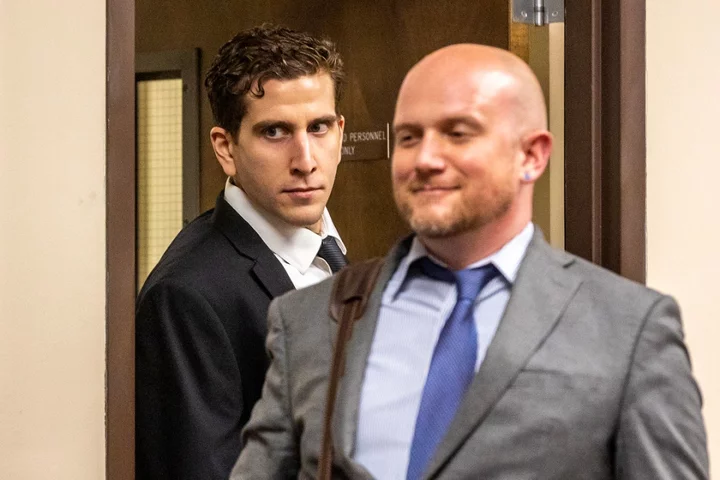
Bryan Kohberger finally reveals vague alibi for night of Idaho murders
Bryan Kohberger has finally offered up a vague alibi for his movements on the night that he is accused of brutally stabbing four University of Idaho students to death in their beds. The 28-year-old criminal justice PhD student claims that he was out on a solo drive throughout the night of 12 November and into the early hours of 13 November – but admits that there are no witnesses to back up his version of events. “Mr. Kohberger has long had a habit of going for drives alone. Often he would go for drives at night,” his attorney Anne Taylor wrote in a new court filing. “He did so late on November 12 and into November 13, 2022. Mr. Kohberger is not claiming to be at a specific location at a specific time; at this time there is not a specific witness to say precisely where Mr. Kohberger was at each moment of the hours between late night November 12, 2022 and early morning November 13, 2022. “He was out, driving during the late night and early morning hours of November 12-13, 2022.” The claims about Mr Kohberger’s unusual nighttime habits – and his whereabouts on the night of the murders – come after prosecutors demanded that his legal team reveal his alibi ahead of his October trial. Under Idaho law, defendants have 10 days to provide a written statement about where they claim to have been at the time of the alleged crime and offering information about any witnesses who can support their claim. On 23 May – one day after he was arraigned on four murder charges – Latah County Prosecutor’s Office put in a demand for Mr Kohberger’s notice of alibi. Back then, Mr Kohberger’s legal team asked Judge John Judge for an extension, saying that they needed more time due to the wealth of evidence in the high-profile case, and the deadline was extended to 24 July. But the deadline came and went, with Mr Kohberger’s legal team hinting that he has evidence placing him in another location at the time of the murders – but stopping short of revealing where and instead saying it may come to light at trial. The prosecution subsequently filed a motion seeking to compel an alibi. While Mr Kohberger’s attorney said that there is no specific witness to say where he was throughout the time of the murders, she wrote in the new filing that she anticipates “corroborating witnesses” will back up his explanation at trial. Mr Kohberger is facing the death penalty over the brutal 13 November murders of Madison Mogen, Kaylee Goncalves, Xana Kernodle and Ethan Chapin. He is due to stand trial on 2 October after being indicted by a grand jury on four counts of first-degree murder and one burglary charge. His explanation that he was out on a solo drive that night comes as prosecutors tied him to the murders, in part, through surveillance footage showing his white Hyundai Elantra travelling to and from the crime scene. The affidavit, released in January, outlined some of the evidence against the accused killer – including his DNA on a knife sheath left behind at the scene of the murders, the surveillance footage and cellphone activity. The sheath – for a military or Ka-Bar style knife – was found partly under Mogen’s body after she and Goncalves were found stabbed multiple times on Mogen’s bed on the third floor of the home. DNA on the button clasp of the sheath was then found to match that of the 28-year-old accused killer. Mr Kohberger’s attorneys have sought to cast doubts on the strength of this DNA evidence, in particular the use of genetic genealogy. According to the affidavit in the case, the FBI used genetic genealogy databases to try to identify the DNA source. Trash was then collected from the suspect’s parents’ home in the Poconos Mountains and a familial match – from Mr Kohberger’s father – was made to the sheath, according to the criminal affidavit. Following Mr Kohberger’s arrest on 30 December, DNA samples were then taken directly from the suspect and came back as “a statistical match”, say prosecutors. Mr Kohberger is accused of breaking into an off-campus student home on King Road in the early hours of 13 November and stabbing the four students to death with a large, military-style knife. Two other female roommates lived with the three women at the property and were home at the time of the massacre but survived. One of the survivors – Dylan Mortensen – came face to face with the masked killer, dressed in head-to-toe black and with bushy eyebrows, as he left the home in the aftermath of the murders, according to the criminal affidavit. For more than six weeks, the college town of Moscow was plunged into fear as the accused killer remained at large with no arrests made and no suspects named. Then, on 30 December, law enforcement suddenly swooped on Mr Kohberger’s family home in Albrightsville, Pennsylvania and arrested him for the quadruple murders. The motive remains unknown and it is still unclear what connection the WSU PhD student had to the University of Idaho students – if any – prior to the murders. The murder weapon – a fixed-blade knife – has still never been found. As a criminal justice PhD student at WSU, Mr Kohberger lived just 15 minutes from the victims over the Idaho-Washington border in Pullman. He had moved there from Pennsylvania and began his studies there that summer, having just completed his first semester before his arrest. Before this, he studied criminology at DeSales University – first as an undergraduate and then finishing his graduate studies in June 2022. While there, he studied under renowned forensic psychologist Katherine Ramsland who interviewed the BTK serial killer and co-wrote the book Confession of a Serial Killer: The Untold Story of Dennis Rader, the BTK Killer with him. He also carried out a research project “to understand how emotions and psychological traits influence decision-making when committing a crime”. Read More Bryan Kohberger claims DNA may have been planted at Idaho murders scene – as alibi deadline looms Bryan Kohberger defence hints at alibi in Idaho murders - but won’t reveal what it is as deadline passes Bryan Kohberger could face the firing squad for the Idaho murders. What would this mean?
1970-01-01 08:00
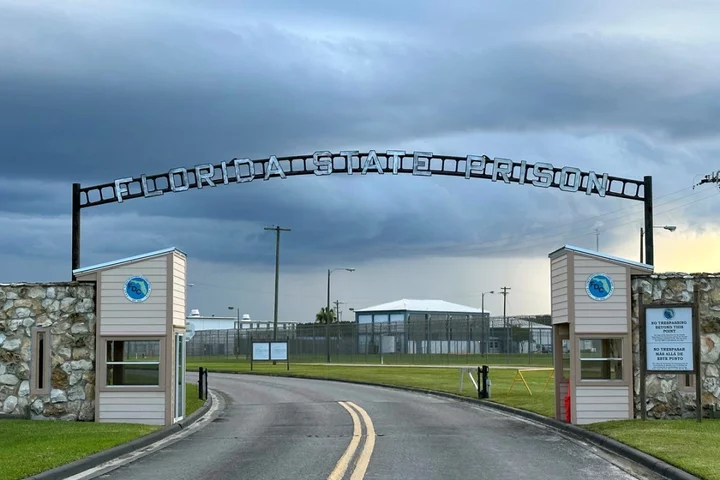
Florida executes man for 1988 murder of nurse who was sexually assaulted, killed with hammer, set on fire
A Florida man who recently dropped all legal appeals was executed Thursday for the 1988 murder of a woman who was sexually assaulted, killed with a hammer, and then set on fire in her own bed. James Phillip Barnes, 61, was pronounced dead at 6.13pm following a lethal injection at Florida State Prison in Starke. Lying on a gurney, Barnes appeared to already have his eyes shut when the curtain was opened for witnesses. He didn't respond when prison officials asked if he had a final statement, and he remained motionless except for breathing for about 10 minutes until that stopped. A doctor then pronounced him dead. The 61-year-old inmate was sentenced to death for the murder of nurse Patricia “Patsy” Miller. It was the fifth execution in Florida this year. One of the victim's siblings, Andrew Miller, witnessed the execution and said he came to remember his sister. “I did not come here to watch someone die. I came here to honor our sister, Patricia Miller,” he told reporters afterward. “No one should live in fear within the safety of their own home. No woman, no child, no animal should have that fear. We did.” Barnes was serving a life sentence for the 1997 strangulation of his wife, 44-year-old Linda Barnes, when he wrote letters in 2005 to a state prosecutor claiming responsibility for killing Miller years earlier at her condominium in Melbourne on Florida’s east coast. Barnes represented himself in court hearings where he offered no defense, pleaded guilty to killing Miller and did not attempt to seek a life sentence rather than the death penalty. Miller, who was 41 when Barnes killed her on April 20, 1988, had some previous unspecified negative interactions with him, according to a jailhouse interview he gave German film director Werner Herzog. “There were several events that happened (with Miller). I felt terribly humiliated, that’s all I can say,” Barnes said in the interview. When he pleaded guilty, Barnes told the judge that after breaking into Miller’s unit, “I raped her twice. I tried to strangle her to death. I hit her head with a hammer and killed her and I set her bed on fire,” according to court records. There was also DNA evidence linking Barnes to Miller’s killing. After pleading guilty, Barnes was sentenced to death on 13 December 2007. He also pleaded guilty to sexual battery, arson, and burglary with an assault and battery. Barnes killed his wife in 1997 after she discovered that he was dealing drugs. Her body was found stuffed in a closet after she was strangled, court records show. Barnes has claimed to have killed at least two other people but has never been charged in those cases. Barnes had been in and out of prison since his teenage years, including time served for convictions for grand theft, forgery, burglary and trafficking in stolen property. In the Miller case, state lawyers appointed to represent Barnes filed initial appeals, including one that led to mental competency evaluations. Two doctors found that Barnes had symptoms of personality disorder with “borderline antisocial and sociopathic features.” However, they pronounced him competent to understand his legal situation and plead guilty, and his convictions and death sentence were upheld. After DeSantis signed the inmate’s death warrant in June, a Brevard County judge granted Barnes’ motion to drop all appeals involving mitigating evidence such as his mental condition and said “that he wanted to accept responsibility for his actions and to proceed to execution (his death) without any delay,” court records show. Though unusual, condemned inmates sometimes don’t pursue every legal avenue to avoid execution. The Death Penalty Information Center reports that about 150 such inmates have been put to death since the US Supreme Court reaffirmed the death penalty as constitutional in 1976. The Florida Supreme Court accepted the Brevard County ruling, noting that no other motion seeking a stay of execution for Barnes had been filed in state or federal court. In the Herzog interview, Barnes said he had converted to Islam in prison and wanted to clear his conscience about the Miller case during the holy month of Ramadan. “They say I’m remorseless. I’m not. There are no more questions on this case. And I’m going to be executed,” Barnes said. Read More Grieving families confront Pittsburgh synagogue shooter at death penalty sentencing Singapore executes third prisoner in just 8 days. What explains this fresh wave of death sentences? Robert Bowers killed 11 in a Pittsburgh synagogue shooting. A jury ruled that he deserves death
1970-01-01 08:00
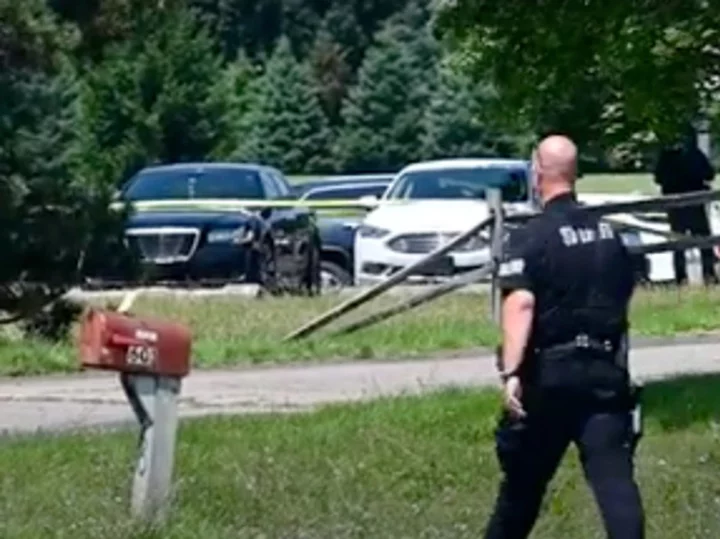
Suspect arrested after shooting at Michigan assisted living home
Michigan police arrested a male suspect on Thursday who allegedly carried out a shooting across multiple locations in the town of Saline, including an assisted living home. Saline police vehicles were seen at a United Auto Workers hall, as well as at the Linden Square Assisted Living Center, Fox 2 Detroit reports. Two victims were taken to local hospitals in critical condition, according to Huron Valley Ambulance, WXYZ reports. “Saline Police responded to an active shooter situation at Linden Square Assisted Living Center. Additional details are forthcoming,” police wrote on Facebook. “City and school facilities went on a temporary lock down in response. At this time, it is believed there is no further threat to the community.” A local resident told Detroit News the shooting appeared to be a domestic incident between residents who live across from the assisted living centre. All residents of the facility are safe and accounted for, CBS News reports. City and state buildings in Saline went on temporary lockdown during the shooting. This is a breaking news story and will be updated with new information.
1970-01-01 08:00
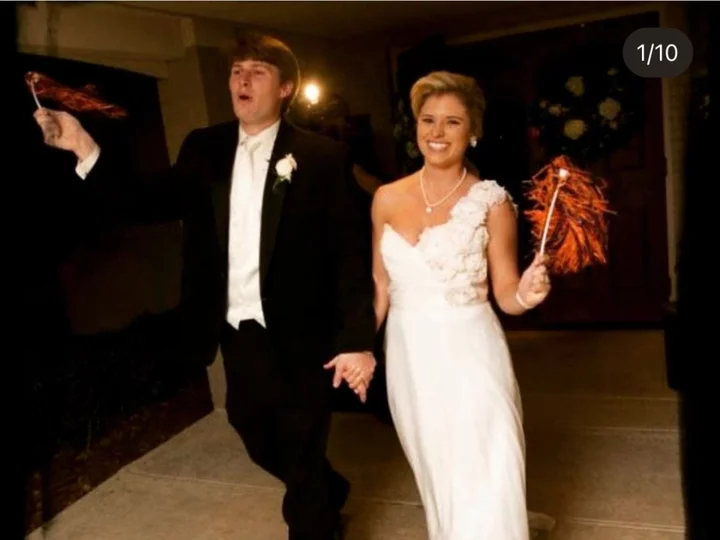
College football star reportedly helped wife post bail after arrest for hitman plot to kill him
Former Auburn football player Robert Shiver, whose wife Lindsay Shiver was charged with plotting to murder him, helped her and her alleged accomplices post bail. On 21 July, Lindsay Shiver, 36, her alleged lover Terrance Bethel, 28, and the purported hired hitman Faron Newbold, 29, were charged with plotting to murder the former football player. After their application for emergency bail was rejected on 28 July, the prosecution withdrew an objection to the trio’s release after hearing from Mr Shiver, according to Bahama Court News. All three of the accused were granted emergency bail on 1 August. According to Fox News, the three have been held at the Fox Hill Prison – the only detention centre in the Bahamas – since their arrest. Ms Shiver was granted $100,000 bail, and is required to wear an ankle monitor and stay in the Bahamas until her next court date: 5 October. The other two men each posted $20,000 bail, Bahama Court News reported, and also must wear monitoring devices. Mr Bethel and Mr Newbold will also be required to check in at the Marsh Harbour Police Station three times a week before 6pm. The men were also forced to stay in the Bahamas, as they had to surrender their travel documents. The accused will have to stay in detention until the court approves their bonds, the outlet said. Mr Shiver posting bail for his wife is a shocking turn of events as the Shivers are in the midst of a contentious divorce and custody battle over their three children. In addition to their home in the Bahamas, the couple also have a mansion in Georgia valued at $2.5m, which the pair are also arguing over. Mr Shiver filed for divorce for “adulterous conduct,” according to reports, while attorneys for Lindsay Shiver denied the affair, writing: “Any extramarital relationship defendant has had was during the parties’ separation and legally condoned by husband.” The next divorce hearing will be held on 31 October, Fox News previously reported. Read More A football star’s wife bragged of her ‘perfect marriage’. Now she’s charged with hiring a hitman to kill him American mother-of-three arrested in Bahamas over alleged plot to kill ex-football star husband Mother, 18, accused of trying to hire hitman to kill three-year-old son
1970-01-01 08:00
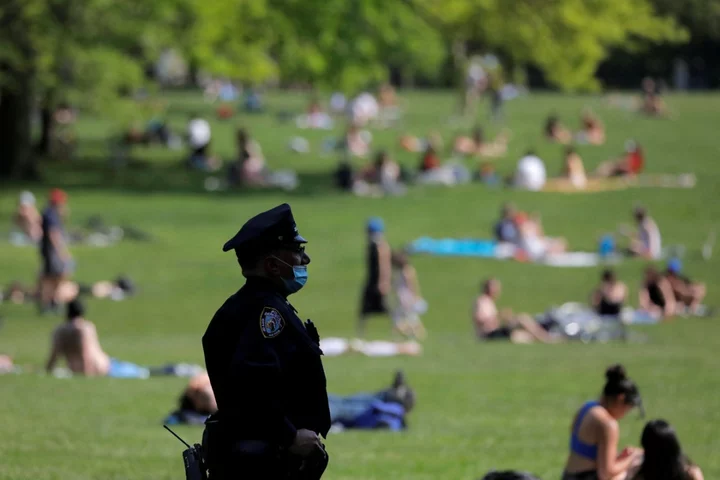
New York banker accused of raping teen he pretended was his daughter hit with 75 new criminal charges
A New York City banker who was accused of raping a 14-year-old he pretended was his daughter has been hit with dozens of additional charges over the alleged abuse of three more victims. Michael Olson, 55, was remanded in custody on 15 June and was initially indicted with 17 charges, including the rape and drugging of the girl he met online. On Tuesday, he was hit with a superseding indictment with 75 counts of criminal charges on allegations of continuing to target young girls online after being released on a $1m bond in May, Manhattan assistant district attorney John Fuller said. Additionally, he faces 32 felony counts for possessing videos and pictures of a child performing sexual acts. “These 32 [counts] represent some of the most graphic and lewd images that he possessed,” Mr Fuller said in Manhattan’s Supreme Court, according to New York Post. The initial charges on Mr Olson were linked to a 14-year-old girl who authorities said was found in a Midtown Manhattan hotel room with Mr Olson after overdosing on cocaine and Xanax on 26 May. Authorities said they found sex objects like vibrators, handcuffs, rope, lubricant and condoms in the room which the accused said were gifts to the girl. The investigation revealed there were numerous other victims and he had hundreds of screenshots of Instagram accounts of Asian teenage girls who had posted about not being able to afford clothes. He had found the Instagram account of the 14-year-old girl in December after she posted about clothes being too expensive. He then sent her a gift card to buy clothes and paid her money to spend time with him. Prosecutors alleged he raped the girl repeatedly and paid $700 a week to engage in sexual conduct in the hostel room passing her off as her daughter to avoid suspicion. According to Mr Fuller’s statement to the court, 50 new charges against him involve not only selling drugs to another child, but also engaging in the solicitation of children for prostitution. Judge Ann Scherzer issued orders to bar Mr Olson from contacting the alleged victims. “The orders are going to remain under seal so no one can see the names because they are children. But you will see the names, and with respect to those individuals – you may not have any contact with them whatsoever. None,” she told him. Mr Oslon has pleaded not guilty. Proposing a plea deal, prosecutors told the court that he can get his jail sentence reduced to 25 years and mandatory registration as a sex offender. Jeffrey Lichtman, his defence attorney, said they were caught off guard by the additional charges involving the new alleged victims. “There’s no allegation of any more sexual contact with any new victims,” Mr Lichtman said. “I understand where the offer is coming from, but for a 55-year-old defendant, 25 years might as well be a 1,000 [years],” he said. Read More ‘I believe I was drugged and raped at a police station - I deserve to know who my attacker is’ Investigators recall surreal moments during years-long investigation in Mexico's missing students Oppenheimer fans point out ‘disturbing’ shot going unnoticed by many viewers
1970-01-01 08:00

Two young men were found dead in a Brooklyn canal after visiting the same nightclub. Are they linked?
After two men were found dead in the same creek after attending a Brooklyn concert venue, speculation has swirled as to whether the two are connected. Police said 27-year-old John Castic was last seen after leaving The Brooklyn Mirage club around 3am on 29 July. On 1 August, just days after he vanished, the Goldman Sachs staffer was pulled from Newtown Creek, a waterway near the venue. Shockingly, Castic wasn’t the only young man who this had happened to in recent weeks. Psychologist Karl Clemente, also 27, vanished from the same music venue on 11 June. His body was found on 16 June in Newtown Creek. The Independent has reached out to the venue for comment. Are the two deaths connected? The NYPD told The Independent the deaths have not been linked, adding that the investigations are active and ongoing. After reports of Castic’s death, Clemente’s father, Alex Clemente, speculated to Fox News: “There’s something weird here. There might be some connection.” Some social media users pointed out that Brooklyn Mirage has little to no service inside, making it difficult to call for help or find friends if lost. Who is John Castic? Castic’s friend posted on Reddit, saying he went missing around 2.30am on 29 July after attending a midnight show at The Brooklyn Mirage. He added that Castic was “last seen wearing a navy and white button down shirt.” Around 11am on 1 August, a man called 911 after seeing a “bloated, shirtless body floating face-down” in a branch of the East River tributary, according to The New York Post. NYPD sources told the outlet that the body, aside from drowning, had no obvious signs of trauma. Police later identified the body as John Castic, who was originally from Illinois. His friend, Sara Kostecka, described Castic to the Post as “very charismatic, high-energy with a good sense of humor,” adding, “Whatever happened, he did not deserve this.” “He was so smart but, in the end, he did something dumb, and it cost him,” Jeffrey Castic, his father, told Fox News. “We think he might have been impaired, we do not know, and it was just a lapse of judgment.” He told the outlet his death was caused by “misadventure,” explaining that his wallet and phone were found when his body was recovered. Who is Karl Clemente? Karl Clemente turned up at the venue on 11 June, but was turned away because staffers said he had been drinking, his father told Fox News. The exchange reportedly occurred around 10pm. Video surveillance obtained by the outlet showed Clemente walking toward a nearby gas station, while other footage allegedly showed Clemente running down Metropolitan Avenue moments later. “Why was he running?” his father told the publication. “Someone was chasing him. There’s something fishy here.” Clemente’s wallet and phone were not recovered with his body. A GoFundMe shows more than $28,000 was raised for his funeral services, accompanied by an outpouring of support and condolences. The Brooklyn Mirage The music venue is located in Bushwick, Brooklyn, in a manufacturing zone. “This is really heartbreaking,” said Councilmember Jennifer Gutiérrez, whose district includes the music venue and the creek. “This is why we need to do more in our manufacturing zones,” she added, warning of the area’s lack of lighting and scarce cell phone service. A former employee at The Brooklyn Mirage said there are a lot of dead zones for cell service inside the building. She said the area is intended for “manufacturing purposes,” so it’s not ideal for nightlife. However, the councilmember said, “If people are here, we need to figure out how to make it safer for folks.” On top of this, Ms Gutiérrez continued, the closest subway station is not that close—it’s an 11 minute walk away, according to Google Maps—and noted the nearby Metropolitan Avenue Bridge, which is “too easy” for someone to fall or be pushed into. The bridge spans Newtown Creek, where both bodies were found. She said that a venue representative told her that the bridge’s video camera was not working over the weekend. The venue also reportedly told the councilmember that it used to have extra security beyond just inside the arena itself. When it opened, according to Ms Gutiérrez, the security used to stand on the route to the nearest train stop to prevent concertgoers from wandering around in the manufacturing district, but due to expenses, the venue stopped providing that service. She said she doesn’t want there to be a “trend” for people to come to her district “not feeling safe.” The councilmember noted that both men were alone at the end of the night; she advised people who attend the area’s music venues to come with friends—“especially friends with different phone carriers.” In a statement on Wednesday, Avant Gardner — the outdoor complex that includes The Brooklyn Mirage — wrote, “Avant Gardner is in communication with the authorities and is assisting with the investigation. We take the safety of our patrons extremely seriously. Our thoughts are with the family and friends during this difficult time.” Read More Body of Goldman Sachs banker pulled from NYC creek after he vanished from concert Police identify suspects in fatal drugging of men at New York City gay bars How the Gilgo Beach serial killer turned the Long Island shore into a graveyard
1970-01-01 08:00
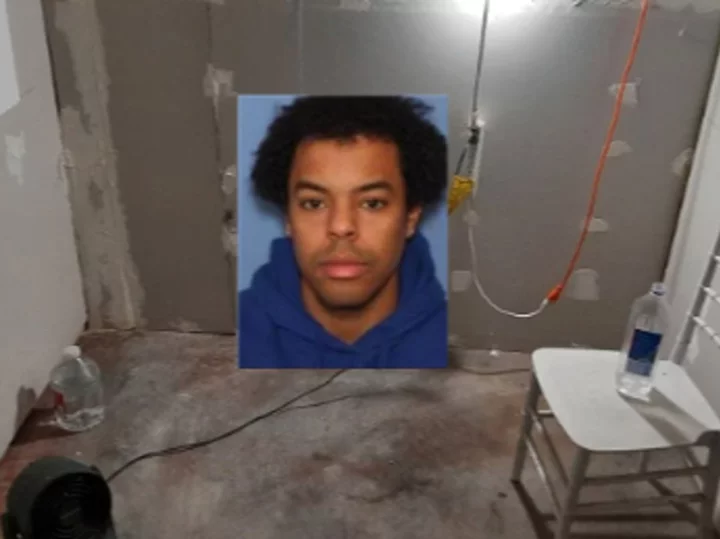
Oregon man arrested after woman escapes cinderblock cell in garage
A man has been arrested in Oregon after a woman escaped a cinderblock cell in his garage, the FBI has said. The agency has said that Negasi Zuberi, 29, from Klamath Falls, Oregon went to Seattle and picked up a prostitute on 15 July, pretending to be an undercover officer. The woman told the authorities that Mr Zuberi aimed a Taser at her and put her in handcuffs and leg irons before placing her in the back of his vehicle, according to KPTV. The victim said that Mr Zuberi sexually assaulted her several times during the 450-mile drive from Seattle to Klamath Falls. After arriving at his home, the suspect placed the victim in the makeshift cinderblock cell in the garage. The Assistant Special Agent in Charge at the FBI Portland Field Office, Stephanie Shark, told KPTV that the legal complaint states that the “woman was kidnapped, chained, sexually assaulted, and locked in a cinderblock cell. Police say, she beat the door with her hands until they were bloody in order to break free. Her quick thinking and will to survive may have saved other women from a similar nightmare”. The woman broke down the door of the cell when Mr Zuberi was away from the house and managed to escape and flagged down a driver who then called 911. More follows...
1970-01-01 08:00
